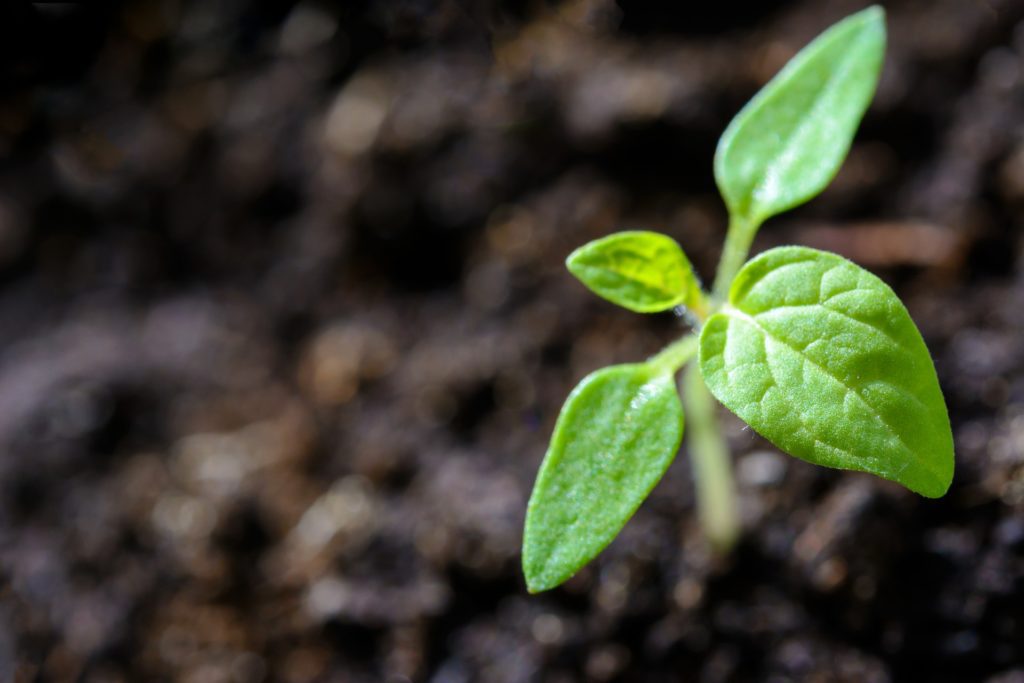How Frugal Innovation in Agriculture Can Answer Tomorrow’s Challenges to Feed the World?
By: Vincent Martin

The challenges to ensure food and nutrition security for all in the contemporary world are complex and intertwined with a broad range of political, financial, and social development issues. To address these challenges, the conventional approach of shaping and implementing development strategies and policies has reached its limits. In search of alternatives, the focus in policy-making should decisively shift to more creative thinking and innovations, which are vital to address current bottlenecks that urge for more disruptive responses to people’s needs.
Responding to these needs should not shy away from considering brave and out-of-the-box solutions that may seem disruptive to conventional thinking. As a matter of fact, to thrive in the 21st century and become an actor of change will indeed require three top skills: 1) complex problem-solving, 2) critical thinking, and 3) creativity[1]. Away from strategy and tactics, the norm will become our capacity to deal with uncertainties and adapt to a fast-moving environment. As put forward by Andrew Chakhoyan “Strategy of making a plan and then executing it is no longer viable – Strategy as we know it is dead”. Although it may sound somewhat extreme, it is in fact particularly true in areas that face constant and fast-evolving challenges, such as the agricultural sector which needs to constantly adapt to climate change, extreme weather events and natural disasters, financial crises, or demographic trends that reshape our food systems and drive new consumer habits.
In such circumstances, what is the prospect of feeding the world of tomorrow, if we apply recipes from yesterday? If not the single answer, innovation can help identify the roots of current bottlenecks and allow for simple yet effective solutions, which build on local and traditional knowledge while leveraging the power of the most recent technologies.
If not the single answer, innovation can help identify the roots of current bottlenecks and allow for simple yet effective solutions
Needless to say, innovation is not straightforward. Trial and error is an integral part of the process. It is through trying, adopting new forms of thinking, and learning from successful or unsuccessful experiences that you can contribute to changing your environment, and respond to unanswered needs. Partnership is the other side of the coin and a key ingredient for success: innovative thinking can only happen at the interstice of different disciplines, social groups and organizations, hence the need to develop collaborations based on diversity that generate divergent thinking and ultimately the solutions of the future.
When Farmers meet Design thinkers to answer tomorrow’s challenges
While innovation is often associated with invention and complex technological systems, rocket science is not necessary. The real genius of innovation lies in simplicity, today often referred to as frugal innovation, in the sense that it is about applying human ingenuity to create faster, better and cheaper solutions for more people (Jaideep Prabhu). It is a different mindset, it is about looking at opportunities in difficult situations and times, developing solutions that do not require massive investments and are affordable to large numbers of people, listening to weak signals, and following one’s intuition.
These principles are particularly relevant to the concept of resilience when people living in harsh conditions need to rely on their ingenuity sometimes to survive and grasp any opportunities for growth.
it is about developing simple solutions based on local knowledge that are key to socioeconomic growth, food security, poverty alleviation
They are also at the heart of many agriculture development initiatives of the Food and Agriculture Organization (FAO), such as the “save and grow” initiative and the Farmer Field School (FFS) program, which mantra is to produce more with less, by better using ecosystem services, reducing the use of pesticides and fertilizers, hence increasing farmer’s income while safeguarding Public health. In other words, it is about developing simple solutions based on local knowledge that is key to socioeconomic growth, food security, poverty alleviation, and increasing resilience to fast-evolving and challenging environments.
Following these principles, the FAO in China has embarked on a promising innovative future by establishing an innovation Lab (AgLabCx) meant to incubate young talents and potential change-makers, through collaboration with government institutions, Chinese IT companies, e-commerce platforms, and leading Universities in innovation and design. While still at its early stage, FAO China Innovation Lab envisages a transformation of the way agriculture development issues are addressed through the creation of eclectic partnerships and leveraging collective intelligence and wisdom.
The formation of new and varied partnerships is indeed instrumental in creating conditions for innovation systems to flourish. One actor alone cannot address the breadth and depth of complex problems the world is facing today that require a wide variety of disciplines and sectors to work together.

Tsinghua University Department of Design in Beijing, a leading Chinese University, has been particularly keen to partner with FAO and offer its design thinking resources to contribute to the revitalization of rural China. It challenges the status quo and brings techniques borrowed from art and design to generate innovative ideas that truly address people’s needs.
FAO and Tsinghua, together with a wide range of partners provide students and stakeholders with a common space and environment where co-creation and sharing of knowledge and technologies are facilitated and encouraged. The use of new technologies such as drones, e-commerce, and knowledge-exchange platforms are discussed and evaluated for their capacity to transform the rural sector in China and beyond. The increasing awareness and willingness of the private sector to participate in philanthropic initiatives are also key for such initiatives to succeed.
From a technical perspective, the FAO innovation journey in China started with the issue of Food Waste and Loss, which can take a massive proportion in a country as vast as China. One-third of food produced for human consumption is lost or wasted globally and innovation has become one of the main tools towards the reduction of food loss and waste. In 2017, AgLabCx brainstorming session events have taken place in Beijing and Shanghai with the support of the Department of Design of Tsinghua University and Bottle Dream, an NGO specializing in social entrepreneurship.
The first innovation Lab session brought together international organizations, government, academia, media, and the private sector to identify bottlenecks and generate people-centered and smart solutions to reduce food loss and waste along the entire food supply chain. Using design thinking methods participants came up with creative ideas that were further explored and are being turned into solutions with partners interested to bring their knowledge, funding, or expertise. Design thinking relies on five steps: empathy, define, ideate, prototype, and test, where Empathy is the centerpiece of this human-centered design process to solve problems. Being empathetic is the work one does to understand people, their physical and emotional needs, and what counts for them. This is defined by IDEO CEO Tim Brown as “a human-centered approach to innovation that draws from the designer’s toolkit to integrate the needs of people, the possibilities of technology, and the requirements for business success”.
As an example of frugal innovation, promoting the use and recycling of “Ugly Food”, food that fails to enter the marketing chain because of non-conformity to packaging standards but is otherwise nutritious and safe, is probably the most obvious and simple way to reduce drastically unnecessary waste at wholesale and retail markets. It does require however raising awareness through education and communication campaigns from producers to consumers. Interesting experiences already exist around the world, including in the United States where giant US groceries are taking seriously the issue of food loss such as Walmart which commercializes weather-damaged apples in Florida and is ready to tackle the “ugly problem of food loss”.
In China, This year’s sustainable consumption week will focus on saving ugly food. FAO will support the Ugly Food Saving Champion campaign which will revolve around the promotion of ugly food through the planning of contests, publications, and events. Engaging with all sectors such as academia, private sector platforms, social businesses but also youth, and the general public, the Ugly Food Saving Champion campaign will be establishing innovative and creative ways to introduce ugly food to China’s dinner tables.
A new era of technological innovation that builds on local knowledge
Taking advantage of the fast-paced development of Information and Communication Technologies (ICTs) in China, the design thinking method was also used to explore the capacity of Farmer Field Schools (FFS), one of FAO’s flagship programs, to further improve millions of livelihoods and guarantee better quality products and lower environmental footprints. In its Internet Plus Action Plan issued in 2015, the Government of China called for using the Internet to improve agricultural production, business, management, and service, to establish a traceability system for quality and safe agricultural products and by-products. In a country that counts today 201 million rural netizens, China aims to achieve complete broadband coverage in both rural and urban areas by 2020, offering new opportunities for agriculture to meet the internet and improve local people’s livelihood.
Harnessing this opportunity, Tsinghua University together with FAO and the participation of major IT companies and government agencies has created a stimulating 8 weeks course for its graduated students that focuses entirely on FFS+ICTs and reinforces design thinking that will harness the potential of innovation to the hilt.
FAO China FFS+ICTs for Poverty Alleviation program revolves around new forms of innovative partnerships with the private sector such as Alibaba and JD.com e-commerce platforms, introducing technologies such as drones that allow delivery of products in the most remote places or e-commerce in rural China that offers new opportunities for farmers to access urban and peri-urban markets. Innovation will allow FFS to reach the most remote farmers and provide them with the necessary tools to participate in a new era of agroecological production, focusing on the quality and safety of products. This ultimately creates the opportunity for farmers to leap-frog on the path of technical development, as they can immediately start using the newest technology without having to transition from older, outdated ones.
Innovation and technology being relatively new instruments, we must also be aware of challenges and obstacles that may arise. Obstacles such as illiteracy rates among farmers and their perception of ICTs must be taken into account in order to form the most suitable approaches.
The FAO AgLabCx platform is a model in this direction and has made significant strides during the past months in generating new partnerships and promoting innovative solutions.
Of course, there is no one-size-fits-all solution for solving complex food and health-related issues. But there is an opportunity for tapping into the potential of frugal innovation and unlocking it to meet the needs of many. If implemented successfully, such approaches can transform the way we address development issues and create the conditions to sustainably feed a growing population and fight against poverty at the same time.
Ready to be an agent of change? Join us in embracing frugal innovation and design thinking to tackle complex food and nutrition challenges. Be part of the movement that leverages local knowledge, creative solutions, and the power of technology to ensure food security, poverty alleviation, and resilience in a fast-evolving world. Together, we can make a difference. Start innovating today!
[1] source: future Jobs Report, World Economic Forum
FAQs
Q1: What are the challenges associated with ensuring food and nutrition security in the contemporary world?
A1: The challenges to ensure food and nutrition security for all in the contemporary world are complex and intertwined with a broad range of political, financial, and social development issues.
Q2: What is the conventional approach to addressing food and nutrition security challenges, and why is it limited?
A2: The conventional approach of shaping and implementing development strategies and policies has reached its limits in addressing the challenges of food and nutrition security. The complex and evolving nature of these challenges requires more creative thinking and innovative solutions.
Q3: What are the top skills required to thrive in the 21st century and become an actor of change in the field of food and nutrition security?
A3: The top skills required to thrive in the 21st century and contribute to change in the field of food and nutrition security are complex problem-solving, critical thinking, and creativity.
Q4: How can innovation help address current bottlenecks and improve food and nutrition security?
A4: Innovation can help identify the roots of current bottlenecks and enable the development of simple yet effective solutions. By leveraging local knowledge and the power of recent technologies, innovation can contribute to improving food and nutrition security.
Q5: Why are partnerships and collaborations important in fostering innovation and addressing complex food and nutrition security issues?
A5: Partnerships and collaborations are crucial in fostering innovation and addressing complex food and nutrition security issues. By bringing together diverse disciplines, social groups, and organizations, these collaborations generate divergent thinking and contribute to finding effective solutions for the future.




